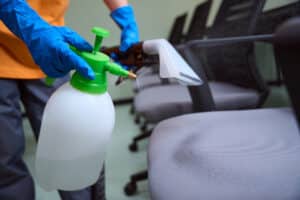Keeping A Healthy Environment for Your Home and Other Spaces
Why is it important to understand the difference between cleaning and sanitizing? These two processes are crucial in maintaining a healthy environment, whether it’s in our homes, workplaces, or public spaces. 
Understanding the distinction between cleaning and sanitizing is not just a matter of semantics. It’s about understanding how we can effectively reduce the risk of illness and infection in our surroundings. It’s about knowing which methods to use for different scenarios, and why both processes are necessary for ensuring comprehensive hygiene.
So, let’s unpack these terms and examine what they truly mean, their applications, and why each plays a critical role in our lives. Whether you’re a professional in the cleaning industry, a diligent homeowner, or simply someone interested in the science behind everyday processes, this blog will provide valuable insights. Let’s dive in!
Understanding the Basics
Cleaning and sanitizing are two fundamental practices in maintaining a clean and healthy environment. However, they are not interchangeable terms and each has its own unique purpose and process.
Cleaning refers to the physical process of removing visible dirt, debris, and impurities from surfaces. It involves using soap or detergent and water to scrub and wash off dirt, thereby reducing the number of germs. Cleaning does not necessarily kill the germs, but it lessens their numbers and thus, the risk of spreading infection.
- Cleaning is a crucial first step – it prepares the surface for further actions such as sanitizing or disinfecting.
- Cleaning agents like soaps or detergents work by creating an environment where water can interact with dirt and grime, breaking them down to be washed away.
- The goal of cleaning is to make a surface look and feel clean.
Sanitizing, on the other hand, is a step further. It involves the use of chemicals or heat to kill or reduce the number of harmful microorganisms to a safe level. Sanitizing does not necessarily clean dirty surfaces or remove germs, but by killing germs on a cleaned surface, it can further lower the risk of spreading infection.
- Sanitizing is typically done after cleaning, especially in settings like kitchens or bathrooms where there’s a higher risk of bacterial growth.
- Sanitizers are regulated by the EPA and must meet certain criteria to effectively reduce the number of bacteria present.
- The aim of sanitizing is to make a surface safe by reducing the risk of infection.
Both cleaning and sanitizing are crucial in maintaining a hygienic environment. They work together to provide a comprehensive approach to prevent the spread of diseases and ensure our surroundings are safe and clean.
 Comparing Cleaning and Sanitizing
Comparing Cleaning and Sanitizing
While both cleaning and sanitizing play a significant role in maintaining a clean and healthy environment, it’s important to understand their differences, the sequence in which they should be carried out, and why both processes are crucial for optimal hygiene.
Differences Between Cleaning and Sanitizing
Cleaning and sanitizing, though often used interchangeably, serve different purposes:
- Cleaning is about removing dirt, grime, and impurities from surfaces. It involves physical scrubbing, often with soap or detergent and water. The goal of cleaning is to reduce the number of germs and impurities, making the surface look and feel clean.
- Sanitizing, on the other hand, is about reducing the number of microorganisms on a cleaned surface to a safe level. This process doesn’t necessarily clean dirty surfaces but kills bacteria to further lower the risk of spreading infection.
The Sequence of Cleaning and Sanitizing
Cleaning should always come before sanitizing. This is because sanitizers work best on clean surfaces. When a surface is dirty, sanitizers may not make direct contact with all the areas where microorganisms are present. Thus, cleaning first helps remove any barriers (like dirt or grease) that could potentially lessen the effectiveness of the sanitizer.
Importance of Both Processes in Maintaining Hygiene
Both cleaning and sanitizing are vital for maintaining a hygienic environment. Cleaning alone is often not enough, especially in environments like kitchens, bathrooms, and healthcare facilities where harmful microorganisms can thrive. Similarly, sanitizing without cleaning first can also be ineffective as the presence of dirt and grime can reduce the effectiveness of the sanitizing agent. Therefore, using both processes in the correct order provides a comprehensive approach to hygiene and infection control.
Understanding the difference between cleaning and sanitizing, as well as the correct sequence of these processes, can significantly enhance our efforts to maintain clean, healthy environments.
Cleaning and Sanitizing with CUI Solutions
Understanding the difference between cleaning and sanitizing is essential. It provides us with the knowledge to maintain a clean and healthy environment effectively. Cleaning removes dirt and impurities while sanitizing reduces the number of microorganisms to a safe level. By performing these processes in the correct order, we can significantly enhance our efforts to maintain hygiene and prevent the spread of diseases.
If you are looking for effective cleaning and sanitizing solutions, consider CUI Solutions. Our family-owned company offers an extensive range of janitorial and industrial products, specialty cleaners, and chemicals designed exclusively for various needs. Whether it’s for janitorial services, food service, or office supply, we have a product that fits your requirements.
CUI Solutions also gives you the ability to create your own brand with our private branding and custom manufacturing options. With full-color labels and high-quality products at low minimums, it makes it easy for you to establish your brand, even if you’re just starting out.

